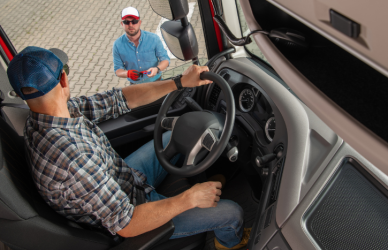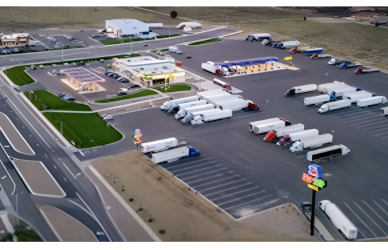Starting this summer, construction will begin on truck parking areas along the Golconda Summit, providing a much-needed resting spot for weary drivers.
Interstate 80 is a vital route for trade between Nevada and California; however, frequent closures due to harsh weather conditions have made it difficult for truckers to find a safe place to rest. This project aims to alleviate that problem and ensure a smoother journey for everyone.
Currently, there are no designated parking spaces or lots at the Golconda Summit. Truckers have been forced to park on interstate ramps or use frontage roads but with this new development, they can rest easy knowing that proper facilities will be available.
The construction project will span into the next year, but the end result will be well worth it.
“This project will build designated truck parking lots for both the eastbound and westbound directions of travel. The project will install multiple vault toilets at each parking lot. New lighting and enclosed trash bins will also be installed,” Meg Ragonese, spokesperson for the Nevada Department of Transportation said.
As part of a $52 million project, the plan includes the construction of 25 parking stalls for eastbound drivers and 24 stalls for westbound drivers. In addition, the existing interchange will also be reconfigured to facilitate easy access to the new truck parking stalls.
This project, which includes the addition of truck climbing lanes, bridge replacements, and hydraulic improvements, comes with a price tag of $25 million just for the interchange reconfiguration and truck parking facilities.
Construction is expected to kick off later this summer, and the work will continue into next year’s construction season. In addition, around 3 miles of truck climbing lanes will also be built in both directions.
“With almost half [45%] of traffic in the area consisting of large trucks, the new truck lane and parking facilities will enhance freight travel and mobility along this critical national freight route,” Ragonese said. “The truck climbing lanes will also enhance travel for all vehicles on this section of I-80, helping to reduce the impact of speed differentials created as heavier vehicles travel more slowly up the grade.”
NDOT is taking steps to improve freight transportation in Nevada’s mountainous areas by adding dedicated truck climbing lanes. In a recent state transportation board meeting, they approved the construction of truck climbing lanes on I-80 at Golconda Summit and the widening of I-15 to create a truck climbing lane for northbound travel between the Ute and Byron interchanges in Clark County.
The July 2022 state Freight Plan Update for Nevada highlighted a serious problem of truck parking shortage. Due to Nevada’s proximity to major West Coast freight centers, many long-haul truck drivers often reach their federally mandated break times while traveling within the state.
“As a result, drivers are faced with a dilemma: park in unsafe locations when there is not available truck parking or illegally drive to find such parking,” NDOT added. “The statewide shortage of truck parking impacts northern Nevada, particularly during winter storm events when I-80 is closed in the Sierras. In southern Nevada, the increasing development of warehouse and industrial land uses near residential areas has exacerbated the need for more designated truck parking areas.”
State transportation officials have identified areas along U.S. Route 93 (between Las Vegas and Ely) and U.S. Route 95 (from Tonopah to Fernley in California, as well as between Winnemucca, Nev., and Marsing, Idaho) that lack truck parking facilities with amenities within a two-hour drive.
Furthermore, Clark County in Nevada is facing a deficit of over 550 truck parking spaces, while Washoe County needs an additional 250 spaces.
In addition to the lack of parking facilities, there is a need for improved technology and information to assist truck drivers in finding available parking spots.
These issues highlight the importance of addressing the trucking industry’s need for adequate rest areas and reliable parking.
Source: Transport Topics











